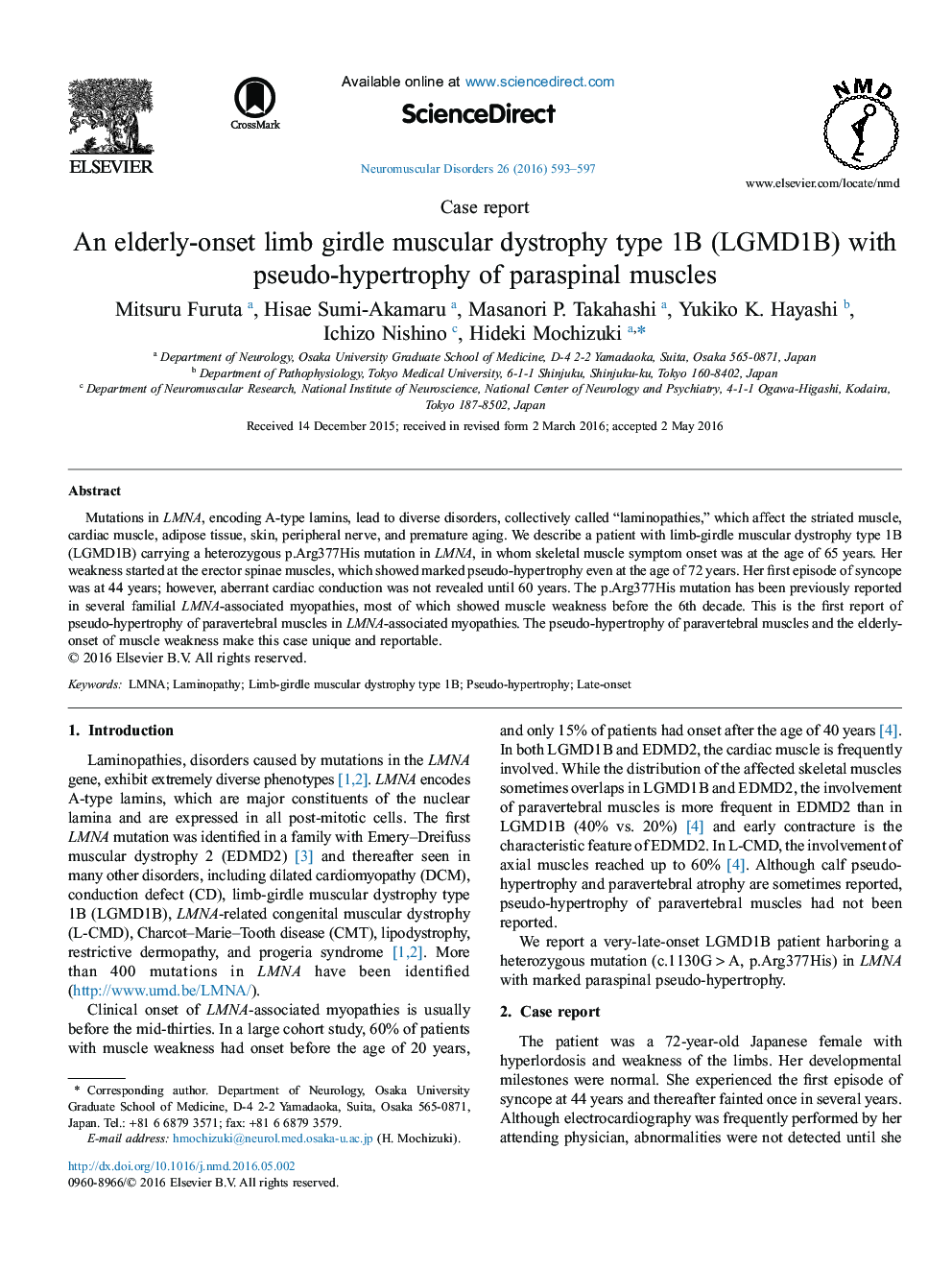| Article ID | Journal | Published Year | Pages | File Type |
|---|---|---|---|---|
| 5632264 | Neuromuscular Disorders | 2016 | 5 Pages |
â¢LGMD1B with paraspinal pseudo-hypertrophy is presented.â¢Late-onset and paraspinal pseudo-hypertrophy make this case unique.â¢p.Arg377His mutation in LMNA causes diverse phenotypes.â¢Paraspinal pseudo-hypertrophy might be related to elderly-onset myopathies.
Mutations in LMNA, encoding A-type lamins, lead to diverse disorders, collectively called “laminopathies,” which affect the striated muscle, cardiac muscle, adipose tissue, skin, peripheral nerve, and premature aging. We describe a patient with limb-girdle muscular dystrophy type 1B (LGMD1B) carrying a heterozygous p.Arg377His mutation in LMNA, in whom skeletal muscle symptom onset was at the age of 65 years. Her weakness started at the erector spinae muscles, which showed marked pseudo-hypertrophy even at the age of 72 years. Her first episode of syncope was at 44 years; however, aberrant cardiac conduction was not revealed until 60 years. The p.Arg377His mutation has been previously reported in several familial LMNA-associated myopathies, most of which showed muscle weakness before the 6th decade. This is the first report of pseudo-hypertrophy of paravertebral muscles in LMNA-associated myopathies. The pseudo-hypertrophy of paravertebral muscles and the elderly-onset of muscle weakness make this case unique and reportable.
